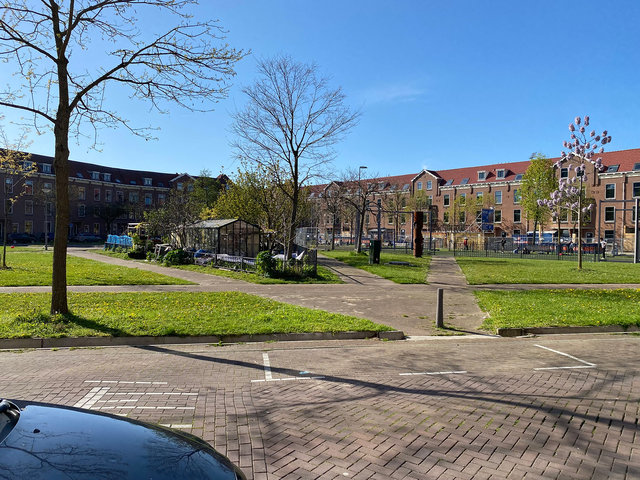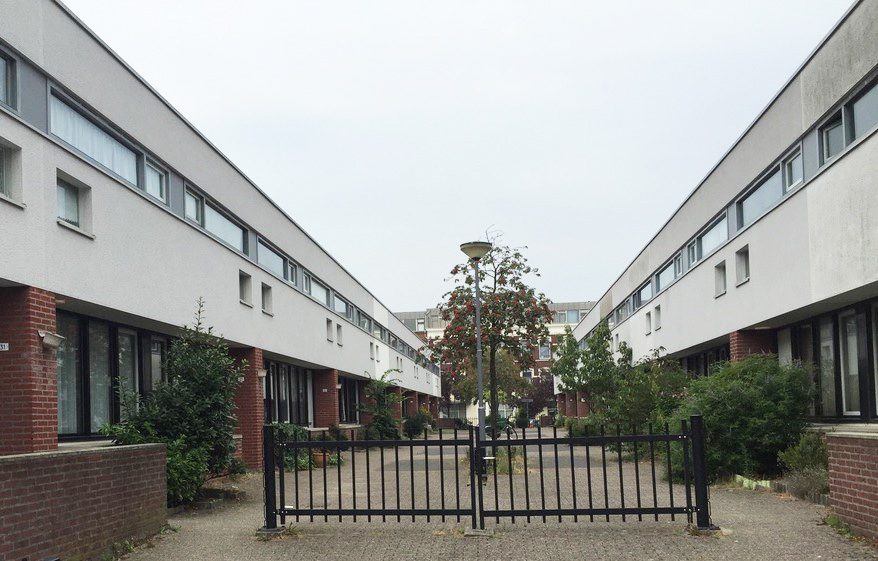How do you design a city in a way that makes people live as enjoyable and healthy lives as possible? Professor Machel van Dorst combines his architectural knowledge with his background in environmental psychology. In his opening speech, Van Dorst calls for attention to the city at eye level: “Where you live also partly defines who you are.”
There is a growing interest in the “healthy” or “sustainable” city. But what does that actually mean? “It is important for people to feel in control of their lives,” says Professor Dr Iyer. Machel van Dorst. “This relates, for example, to whether you have the option of retreating to a quiet place to work, or whether there are places where you can meet others. The physical environment facilitates that control. If something goes wrong, feelings of insecurity or loneliness can arise.” “This can lead to a lack of exercise because people don't like to go out. Or they take the car too often, which makes the street impersonal and unsafe. So you end up in a vicious circle.”
It is important for people to feel in control of their lives.
Machel van Dorst
Multidisciplinary
You can influence this sense of control through urban design. Van Dorst is looking into how best to do this. As Professor of Environmental Behavior and Design, he belongs to the Department of Urban Studies. “This is an eminently interdisciplinary area. Researchers from social geography, urban sociology, data science, environmental psychology and co-creation work here.” Van Dorst believes that this interdisciplinarity is exactly what we need. In science, but also beyond: “Efficiency has been a key concept for a very long time. The physical sphere and well-being were two separate political spheres. But because of this specialization, people working in and around the same physical environment do not know each other.”
An interdisciplinary approach is necessary to address different social challenges. An unhealthy or unsafe living environment makes people more likely to become lonely or poor. Or, for example, a little exercise. “My field revolves around spatial design and psychology,” says Van Dorst. “There is a key behavioral component. Why do people ride a car instead of a bike? Or why don't people meet each other? By changing the environment, you can give people a nudge, a 'nudge,' to make a healthier choice.”
By changing the environment, you can give people a nudge to make a healthier choice.
Machel van Dorst
Connected to the neighborhood
Anyone who looks at a city or neighborhood through design glasses can choose what to look at. Is the city pleasant to live in, work in, or attractive to visitors? Van Dorst believes that cities and neighborhoods are often viewed in an overly instrumental way: “Too much focus on passersby and visitors, and too little attention to the community at eye level; Quality of accommodation. While by furnishing the physical space, you can ensure that people feel connected to the place. Unfortunately, the neighborhood is often the last element in the design: people often think in terms of large traffic structures, ease of access and mobility. In this way, the visitor is actually taken better care of than the resident.” In the past, public space was often simplified: “The idea was: public space belongs to everyone. But this also means that it does not belong to everyone. “No one. And no one feels responsible. This especially happens in places with many high-rise buildings, where public spaces become anonymous. You don’t like to let your children play outside in such a place.”
The city is at eye level
Fortunately, when it comes to health, there is an increasing shift from treatment to prevention. Van Dorst: “Simply put, we can no longer afford all the costs of care. Preventive health means, for example, being able to play in the street, living healthily and safely at home for longer or being able to leave the house easily. All of this is happening today.” . The size of the area or neighborhood.” A healthy city is therefore above all a social city, Van Dorst believes: “For example, there is more social interaction in a dead-end street or a courtyard. Even if there are front gardens, people feel safer and it becomes easier to chat with their neighbours.”
Van Dorst's inaugural speech is precisely about this feeling of connection to your environment. He calls it “the city at eye level.” “Through design, you can organize a neighborhood in such a way that people can quickly ‘read’ the environment. For example, they can see from the buildings that the building constitutes a neighborhood – of which you as a resident are co-owners, and you are welcome as a visitor.” “In such an environment, people feel responsible and dare to talk to each other, for example to get help or if there is dirt on the street, or if a bicycle is stolen.”
A healthy city is first and foremost a social city.
Machel van Dorst
Get used to change
Measures that make a neighborhood more social or healthier sometimes meet resistance. “Everyone likes to be able to park their car in front of the door. But people also want to let their children play outside safely. I'm involved in the IJburg quality team in Amsterdam. The parking centers are now being used there – then you have to walk 'the last part home.' This gives a much greater spatial quality. However, people have difficulty with behavioral changes. That's why it's important to show the population that this works.” The last, involving people in the process, is indispensable: “Many health measures are also beneficial for quality of life. Show it! For example, I supervised PhD students in research related to local climate. Many people are already dying from thermal pollution, especially in urban areas. Soon you end up taking measures such as increasing green spaces on the street. This creates a more pleasant environment for walking, which is good for social cohesion, etc. They are often complex solutions.”
For any initiative to be successful, it is also important to give residents control. “For example, by giving them a budget and letting them decide how to improve their neighborhood together. This will only be possible if local residents work well together, but also with the municipality, for example.” The municipality and other authorities often look at things very abstractly. “For example, they use data about life expectancy or income based on clearly defined neighborhoods. But that's often not how people actually experience their neighborhood at all.”
More attention to the neighborhood
Fortunately, Van Dorst sees a lot of curiosity among students about the user perspective on design. “They want to work on loneliness among the elderly or designs aimed at keeping children in mind.” Van Dorst hopes that the importance of the neighborhood will also be recognized in politics: “When you introduce yourself to someone, you might quickly mention the spatial characteristics: ‘I come from… I live in…’ because you feel connected to the space around you. That's why it's important to pay attention “Designers and policy makers pay more attention to this human scale.”
more information
- On Friday, February 23, Machel van Dorst will give his opening speech: Welcome to my neighborhood.
- View Professors Machiel's page here.

“Coffee buff. Twitter fanatic. Tv practitioner. Social media advocate. Pop culture ninja.”












More Stories
“Ask at least one question in return.”
According to research, people with this sleep rhythm live longer.
13 municipalities in the province of Seville have mosquitoes carrying the Nile virus